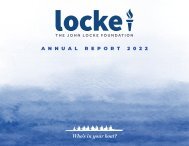Energy Crossroads: Exploring North Carolina’s Two Energy Futures
North Carolina’s Clean Energy Plan, a proposal put together by the Department of Environmental Quality at the behest of Governor Roy Cooper, calls for a 70-percent reduction of greenhouse gas emissions from electricity by 2030 and carbon neutrality by 2050. Duke Energy has submitted Integrated Resource Plans that include pathways to the Clean Energy Plan targets. Duke Energy’s Portfolio D most resembles the Clean Energy Plan, deploying wind, solar, and battery storage on an unprecedented scale. This report assesses North Carolina’s existing electricity portfolio, analyzes the changes proposed by Duke Energy’s Portfolio D, and compares that scenario to alternatives that utilize nuclear energy and natural gas to achieve emissions reduction rather than the Clean Energy Plan’s preferred wind, solar, and battery storage.
North Carolina’s Clean Energy Plan, a proposal put together by the Department of Environmental Quality at the behest of Governor Roy Cooper, calls for a 70-percent reduction of greenhouse gas emissions from electricity by 2030 and carbon neutrality by 2050. Duke Energy has submitted Integrated Resource Plans that include pathways to the Clean Energy Plan targets. Duke Energy’s Portfolio D most resembles the Clean Energy Plan, deploying wind, solar, and battery storage on an unprecedented scale.
This report assesses North Carolina’s existing electricity portfolio, analyzes the changes proposed by Duke Energy’s Portfolio D, and compares that scenario to alternatives that utilize nuclear energy and natural gas to achieve emissions reduction rather than the Clean Energy Plan’s preferred wind, solar, and battery storage.
You also want an ePaper? Increase the reach of your titles
YUMPU automatically turns print PDFs into web optimized ePapers that Google loves.
JOHN LOCKE FOUNDATION
33
North Carolina’s investor-owned utilities are required to present the
state with periodic comprehensive updates on their plans for providing
the state with electricity. These reports are known as Integrated
Resource Plans (IRPs) and the body tasked by statute with evaluating
them is the NCUC.
NCUC’s role, per the Public Utilities Act (G.S. 62), 35 is to provide fair regulation
of public utilities in the public interest. Among NCUC’s various
functions are the aforementioned implementation of REPS and the approval
of IRPs. 36 According to NCUC, integrated resource planning examines
conservation, energy efficiency, load management, and other demand-
and supply-side issues in order to determine the least-cost way
of providing electricity.
Duke Energy Progress 37 and Duke Energy Carolinas 38 filed their latest
IRPs with NCUC in September 2020. The two subsidiaries of Duke Energy
Corporation file separate IRPs with North Carolina and South Carolina,
but since they operate as a joint-dispatch system across the state











